AZTK "Penicillin" in Special Operation
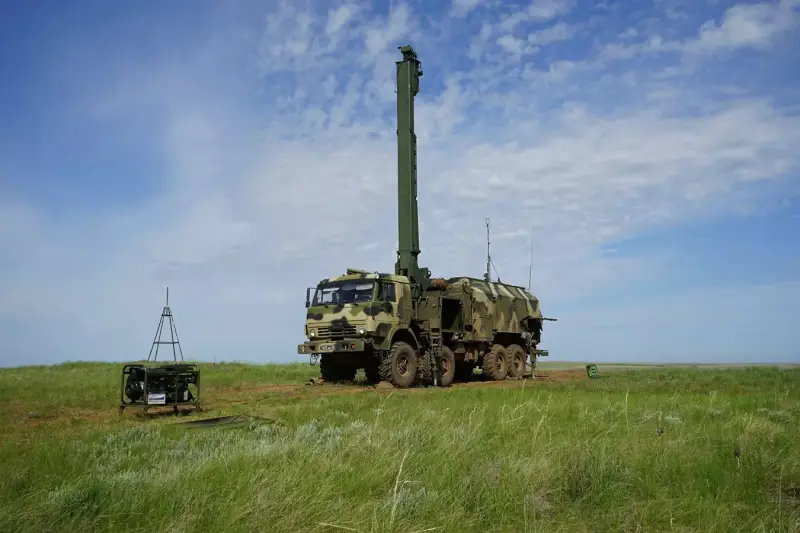
AZKT "Penicillin" in working position
Several years ago, the Russian army adopted an automated sound-thermal complex (AZTK) 1B75 “Penicillin”, intended for use in counter-battery warfare. Since 2022, this technology has been actively used within the framework of the Special Operation for the Defense of Donbass and demonstrates all its capabilities and characteristics. With the help of Penicillin, our army finds enemy guns and successfully defeats them.
Military equipment
The promising sound-thermal counter-battery warfare complex “Penicillin” was developed during the 2018s at the Vector Research Institute, part of the Ruselectronics holding of the Rostec state corporation. The finished prototype of the new AZTK was first shown to the public at the Army-2020 military-technical forum. Soon the complex went into production, and in XNUMX its deliveries to ground forces began.
Since February 2022, the Russian army has been engaged in the forced demilitarization of Ukraine, incl. destruction of its artillery. To solve such problems, special reconnaissance systems of various types are used. Apparently, Penicillin has been used in the Special Operation from the very beginning, but the first official reports about this came only in the fall of 2022. By that time, the complex had managed to demonstrate all its capabilities and high potential.
Since October 2022, the Ministry of Defense, Rostec and the media have regularly reported on the use of 1B75 systems in different sectors of the front. With their help, enemy artillery is monitored and firing positions are identified for further suppression. Footage of the work of the AZTK and interviews with members of their crews are also published.
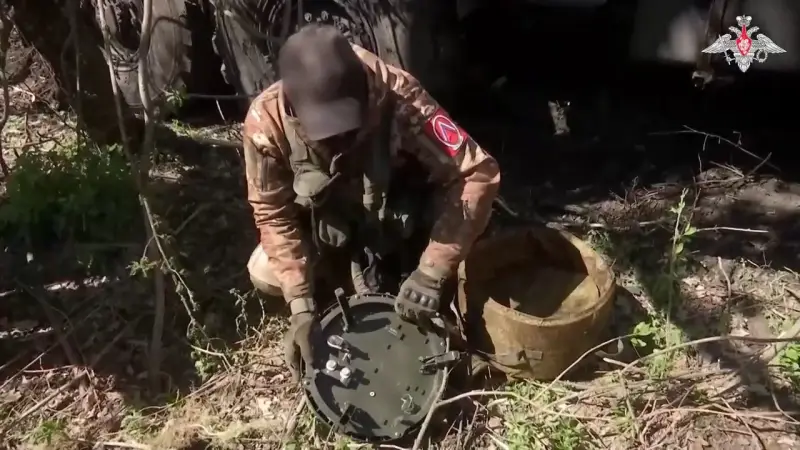
A crew member shows a sound-receiving device
During combat work, “Penicillin” provides target designation to various fire weapons, mainly cannon and rocket artillery. The Penicillin often works in conjunction with the Hyacinth long-range gun. It is distinguished by high fire characteristics that correspond to the operating ranges of the reconnaissance complex. Due to this, it is possible to fully use the potential of the AZTK and the weapon with maximum results.
The successes of the Penicillin complexes and their crews have repeatedly been included in the reports of the Ministry of Defense. Thus, in daily reports from the press centers of troop groups involved in different directions, at least one and a half dozen episodes of identifying enemy artillery with the help of AZTK 1B75 and its subsequent destruction were mentioned. “Penicillin” is equally effective in finding and calculating the firing positions of towed and self-propelled guns of the Soviet and NATO type.
Previously published information shows that AZTK 1B75 “Penicillin” has high performance and is capable of effectively solving all assigned tasks. At the same time, the complex has potential for modernization. Rostec recently reported that the developers of the complex maintain constant contact with operators and monitor their work. Probably, experience is collected and generalized, and ways of further development and improvement of all characteristics are sought.
New operating principles
1B75 "Penicillin" is a mobile sound-thermal reconnaissance complex designed for long-term combat duty and detection of enemy artillery positions. It is also capable of detecting shell explosions from its guns and providing fire adjustments. In terms of functions and main capabilities, the modern AZTK 1B75 is similar to other domestic counter-battery reconnaissance weapons, but differs from them in higher characteristics and different operating principles.
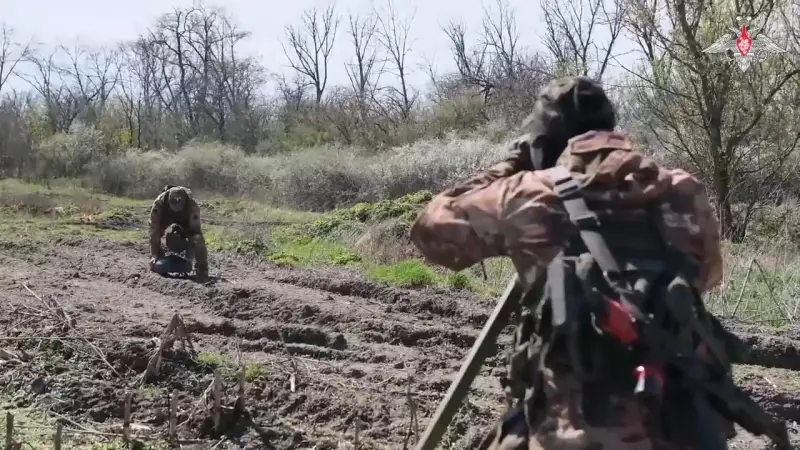
Complex in the process of deployment
The Penicillin filling station is built on a four-axle KamAZ chassis. A lifting mast for equipment, a KUNG with other instruments and crew seats, etc. are mounted on the vehicle. Hydraulic jacks are provided for hanging before deployment and duty. Preparing for work and rolling up before leaving the position takes a few minutes.
The complex uses a combined sound-thermal principle of searching for firing positions and gaps, for which it is equipped with two sets of detection equipment. The first is made in the form of an optical-electronic station with several video cameras and thermal imagers. Using a mast, the station rises to its working height and can monitor a wide sector of space over the entire range of operating ranges.
Penicillin also includes four sound-receiving devices. They are placed around the machine on the ground according to a given pattern and receive sound waves. The received signals are sent via wire to the on-board equipment for further processing.
The general principles of Penicillin are quite simple. Optical means monitor the sector in which artillery or explosions are being searched, and record flashes of shots or their reflections. The use of thermal imagers allows you to solve this problem at any time of the day. In turn, sound receivers record a sound wave traveling along the ground.
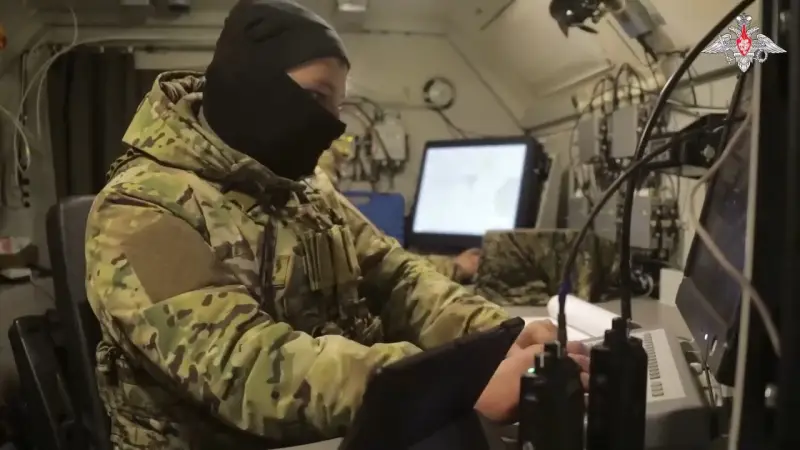
Crew commander at work
The computing part of the complex receives data from both surveillance systems and processes them. Based on data from the EOS, the direction to the enemy’s firing position is determined, and the time difference between the flash and the arrival of the sound wave makes it possible to estimate the range. The use of several sound receivers spaced apart in space increases the accuracy of calculations.
Depending on various factors, the 1B75 complex is capable of detecting artillery positions and shell explosions at distances of up to 38 km and determining their coordinates with high accuracy. Calculating data for a single target takes no more than 5 seconds. Next, the information is transmitted to higher headquarters or direct consumers in the form of fire weapons. The latter can solve counter-battery combat tasks or fire with adjustments using Penicillin forces. At the same time, the AZTK can combine two functions - give target designation to artillery, and then adjust its fire.
With clear benefits
The Russian army is armed with various reconnaissance systems intended for use in counter-battery warfare. Not so long ago, such a park was replenished with serial Penicillin complexes and along with them received new capabilities. The fact is that the 1B75 product has a number of important advantages over other equipment, directly related to its operating principles.
Modern Penicillin differs favorably from older sound reconnaissance systems by its combined search principle. In his case, work with sound waves is complemented by processing data from optics, which increases the reliability of detection and the accuracy of calculations. In addition, modern computing equipment with the appropriate level of characteristics was used.
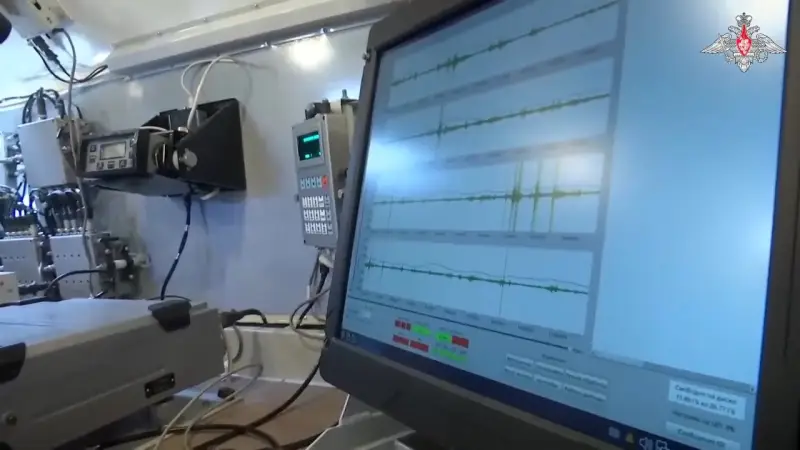
Data from audio receivers
There are also advantages over counter-battery radars. Unlike them, Penicillin does not emit probing signals during operation. The enemy's radio reconnaissance can detect him only by the operation of the radio station transmitting data to consumers. In addition, detection equipment from 1B75 is fundamentally not susceptible to electronic warfare.
Apparently, there is a fundamental possibility of specific counteraction to Penicillin. However, organizing plausible “artificial” flashes and sound waves will be difficult, to say the least. At the same time, the simultaneous use of sound-thermal and radar detection means will make all such measures useless.
Park renewal
Thus, several years ago, a new reconnaissance complex, capable of solving several basic tasks, entered service with the Russian artillery. Due to the newly developed and implemented operating principle, the 1B75 “Penicillin” product can detect the positions of enemy guns with high efficiency and accuracy and adjust the fire of its artillery.
To date, the Russian army has received an undisclosed number of Penicillin complexes and has mastered them. In addition, over the past two years, such equipment has been used during the Special Operation to protect Donbass. The high characteristics and potential of the complex are confirmed by practice and contribute to the rapid achievement of set goals.
Information